For the last two weeks I have been working on a survey for endangered mussels in the Ohio River. I usually enjoy snorkeling in smaller streams for these mollusks, but in the big rivers commercial divers have to do the fun work. They descend up to 60 feet (usually more like 30) into the brown depths. Divers are tethered to a long hose called an “umbilical”, which supplies air from a compressor on a boat at the surface. They often find themselves with their umbilical tangled in submerged piles of trees in water that is so murky that they can’t see more than an arm’s length in front of their face. It’s definitely a job for the adventurous.
Unfortunately, my job on this trip was to sit on the boat listening to the compressor rumble and breath exhaust all day while waiting for divers to bring up mussels. After spending a few 12-hour days on the bottom of the Ohio, several of the divers took to calling the way they felt “mussel fatigue.” Over the course of several of these mussel surveys I’ve been genuinely impressed with the interest that divers begin to show for mussels. It seems that if you have the opportunity to get aquainted with freshwater mussels as something more than stationary filter feeders, you find a group of very colorful animals that have a very interesting life cycle. Apparently you don’t have to be a complete nature geek to appreciate them!
It is much harder for the average person to become aquainted with the mussels of the Ohio River today than it once was. According to a map drawn in 1797 this part of the river was once four feet deep. It was probably a relatively clear, gravel-bottomed run with strong current. It’s hard to imagine this nowadays when you’re standing on a boat looking at a 30-foot deep, brown pool. Humans dammed the river, dredged it, and cleared much of its watershed for the plow. Sediment from farm fields and other eroding areas continues to clog the gills of mussels (mussels breathe through gills—like fish). These developments, plus industrial chemicals, sewage, fertilizers, pesticides, and other pollutants were hard on mussels. As a result several mussel species went extinct, and many others are considered endangered. Sixty percent of the remaining 300 (approximately) species of freshwater mussels in the eastern United States (which is the most mussel-diverse place on earth) are considered to be imperiled (endangered or threatened at the state or federal level). The mussels are definitely fatigued. That’s why we were doing this particular mussel survey—to help steer dredging activities away from healthy mussel beds and places occupied by endangered species.

Divers prepare to begin a mussel survey at sunrise.
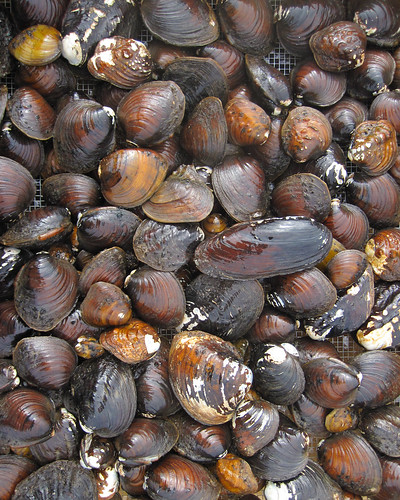
A boatload of mussels of many shapes and sizes. In the end, we found evidence (live mussels and dead shells) of 30 different mussel species in one stretch of river.
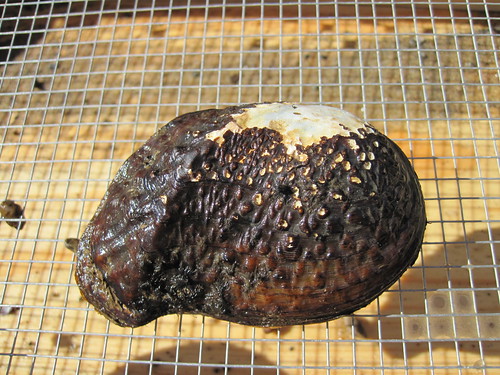
The pistolgrip, a common mussel species of Ohio River drainages.
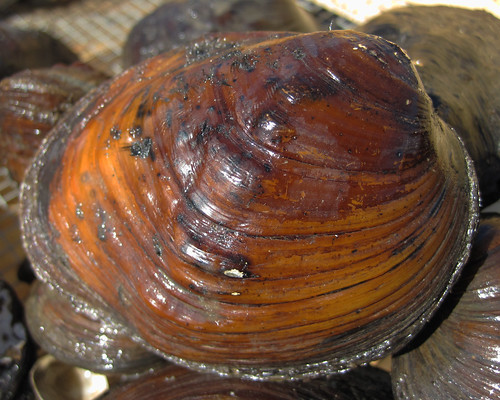
The sheepnose, a species that is a candidate for the federal threatened and endangered species list.
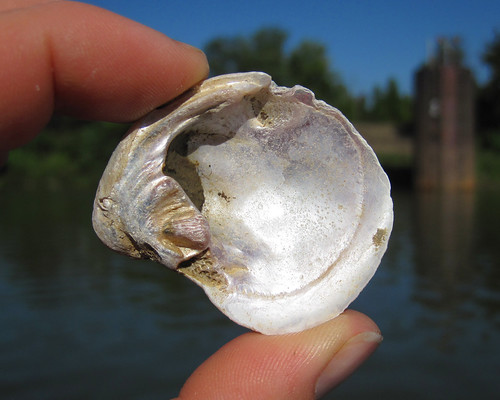
A relict shell of the ring pink, a species that is almost extinct.
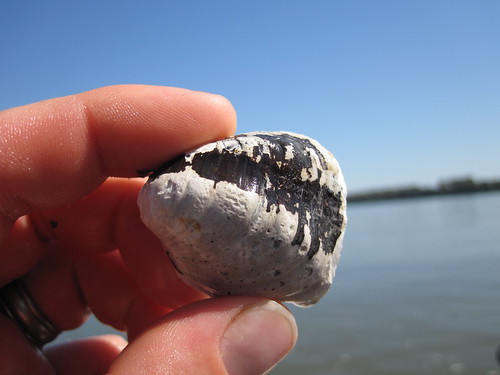
A relict shell from a group of mussels (genus Epioplasma) which are mostly extinct as a result of changes humans wrought on our waters.
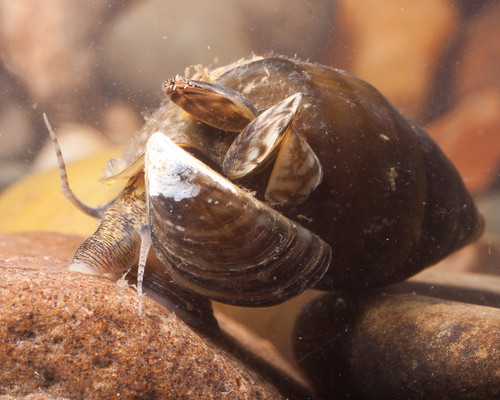
A freshwater snail (hornsnail) that is covered with zebra mussels, an invasive mollusk that is choking many aquatic organisms. The snail can barely get out of its shell, and this isn't even a really bad case of zebra mussels.




 8:30 PM
8:30 PM


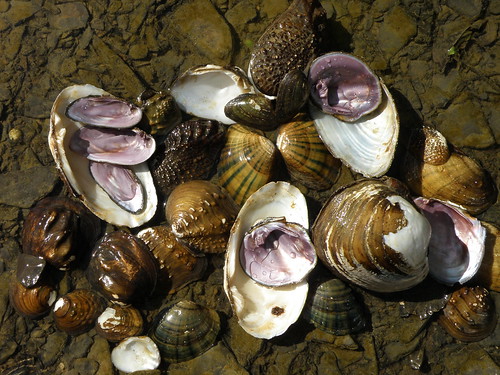
 Posted in:
Posted in: 




1 comments:
Interesting post and very beautiful photos!
Post a Comment